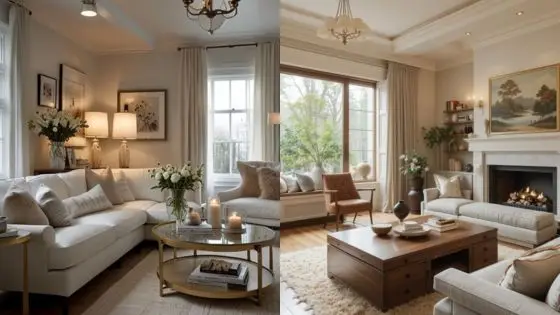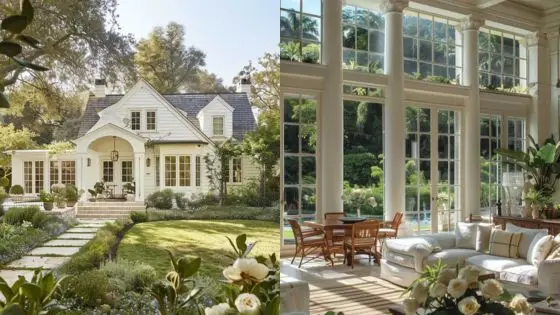Choosing the right flooring for your home can transform any space from dull to delightful. The floor is literally the foundation of your interior design, and updating it doesn’t have to be complicated or expensive.
With the right approach, you can install beautiful new flooring that matches your style, meets your practical needs, and fits within your budget. Whether you’re a DIY enthusiast or prefer professional installation, there are numerous easy flooring options that deliver impressive results without excessive hassle or technical expertise.
1) Laminate Flooring
Laminate flooring offers an affordable way to achieve the look of hardwood without the hefty price tag. This synthetic flooring option consists of multiple layers fused together, with a photographic layer that mimics natural materials like wood or stone.
Installation is relatively straightforward, making it ideal for DIY enthusiasts. Most laminate flooring features tongue-and-groove edges that click together, eliminating the need for adhesives in many cases.
Durability is a major selling point for laminate. The wear layer protects against scratches, stains, and fading, making it suitable for high-traffic areas in your home.
Maintenance couldn’t be simpler. Regular sweeping and occasional damp mopping are all you need to keep your laminate floors looking fresh.
You’ll find laminate in countless styles and colors to match any décor scheme. From rustic oak to sleek marble imitations, there’s something for every taste.
Budget-conscious homeowners will appreciate that laminate typically costs $1-$5 per square foot, significantly less than hardwood or natural stone alternatives.
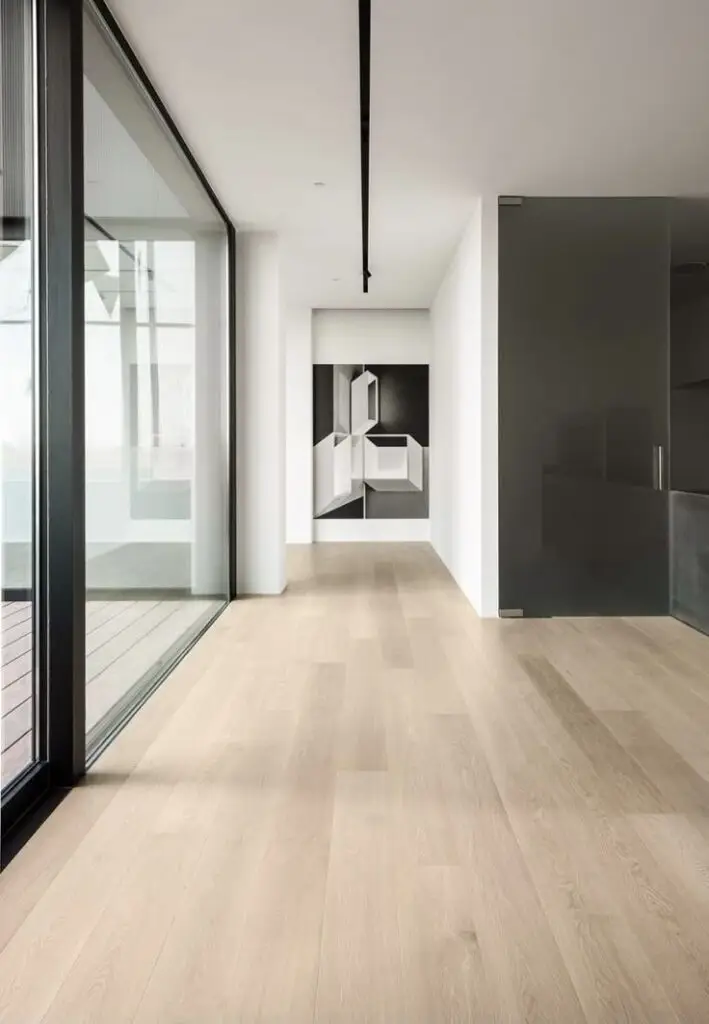
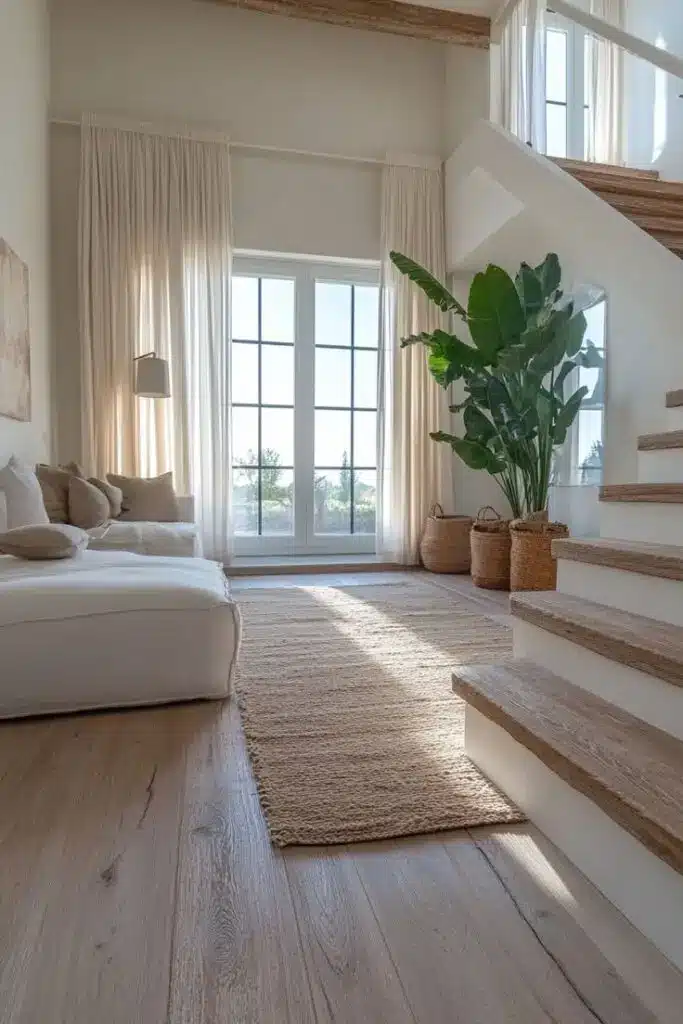
2) Luxury Vinyl Plank (LVP)
Luxury Vinyl Plank flooring offers the perfect blend of style, durability, and affordability. This modern flooring solution mimics the look of hardwood while providing superior water resistance and scratch protection.
Installation of LVP is remarkably straightforward, making it ideal for DIY projects. Most systems feature click-lock edges that snap together without requiring adhesives, allowing you to complete a room in just a few hours.
LVP stands up exceptionally well to high-traffic areas and active households. The wear layer on quality vinyl planks protects against scratches from pets, furniture, and daily use.
You’ll find LVP available in countless styles that convincingly replicate oak, maple, walnut, and exotic wood species. Many options include realistic texture embossing that makes them nearly indistinguishable from real wood.
Maintenance couldn’t be simpler—just sweep regularly and occasional damp mopping is all that’s needed. Unlike hardwood, you never need to sand, refinish, or worry about water damage.
For bathrooms, kitchens, and basements, LVP provides a practical solution where traditional hardwood isn’t recommended. The waterproof core prevents warping even in moisture-prone areas.
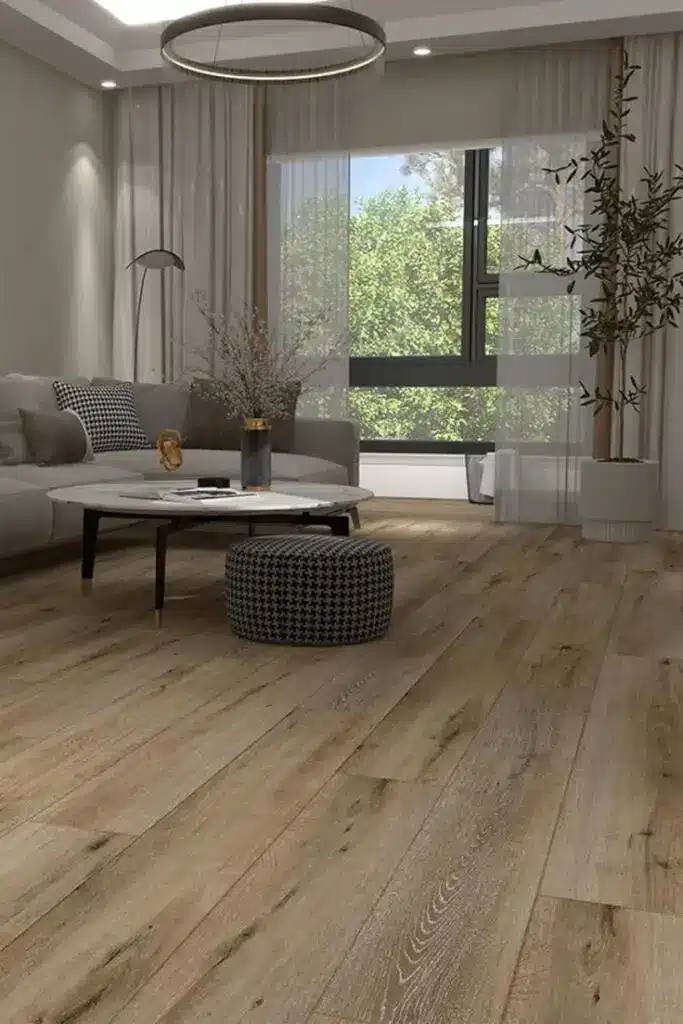
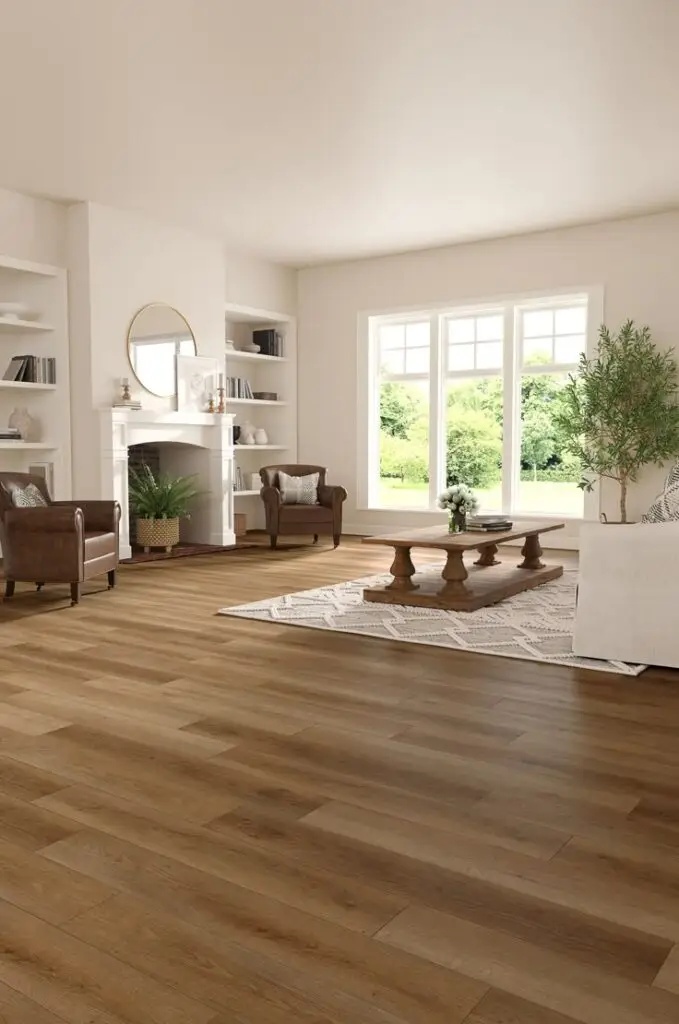
3) Engineered Wood Flooring
Engineered wood flooring offers the beauty of hardwood with enhanced stability and versatility. It consists of multiple layers, with a real wood veneer on top and plywood or high-density fiberboard underneath. This construction makes it less susceptible to warping and expansion from humidity changes.
You can install engineered wood in areas where solid hardwood isn’t recommended, like basements or over concrete slabs. Many options come as floating floors with click-and-lock systems, making them suitable for DIY installation if you’re comfortable with basic tools.
Price points vary widely based on the thickness of the top veneer layer and overall quality. Entry-level options start around $3-5 per square foot, while premium varieties with thicker wear layers can reach $10-12 per square foot.
The wear layer thickness matters if you plan to stay in your home long-term. Thicker top layers (3mm+) can be refinished multiple times, extending the floor’s lifespan considerably.
Most engineered timber flooring comes pre-finished, eliminating the need for sanding and finishing after installation. This means you can walk on your new floors immediately after installation.
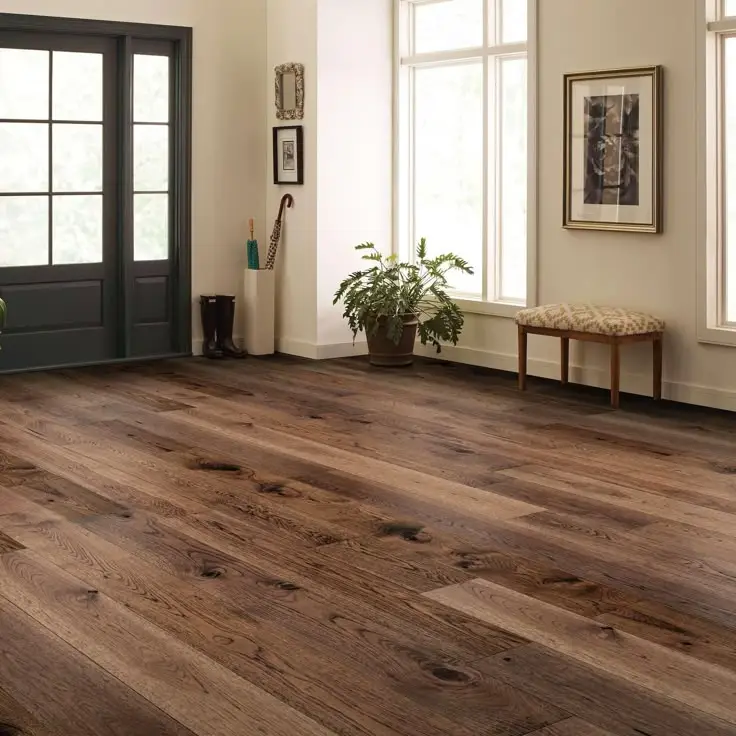
4) Cork Flooring
Cork flooring offers a unique combination of comfort and sustainability for your home. Harvested from the bark of cork oak trees without killing them, this renewable material makes an excellent eco-friendly choice for environmentally conscious homeowners.
Walking on cork feels soft and warm underfoot due to its natural cushioning properties. This makes it particularly appealing for areas where you stand for extended periods, such as kitchens.
Cork provides natural sound insulation, helping reduce noise transmission between floors. It also offers thermal insulation properties that can help maintain comfortable room temperatures and potentially reduce energy costs.
Installation is relatively straightforward with cork available in both glue-down tiles and floating floor planks. The floating option tends to be easier for DIY installations if you’re looking to save on professional installation costs.
Cork resists mold and mildew naturally, making it suitable for most areas of your home. However, you should consider applying additional sealing in moisture-prone spaces like bathrooms.
With proper maintenance, cork flooring can last 10-30 years. Regular sweeping and occasional damp mopping with mild cleaners will keep your cork floors looking their best.

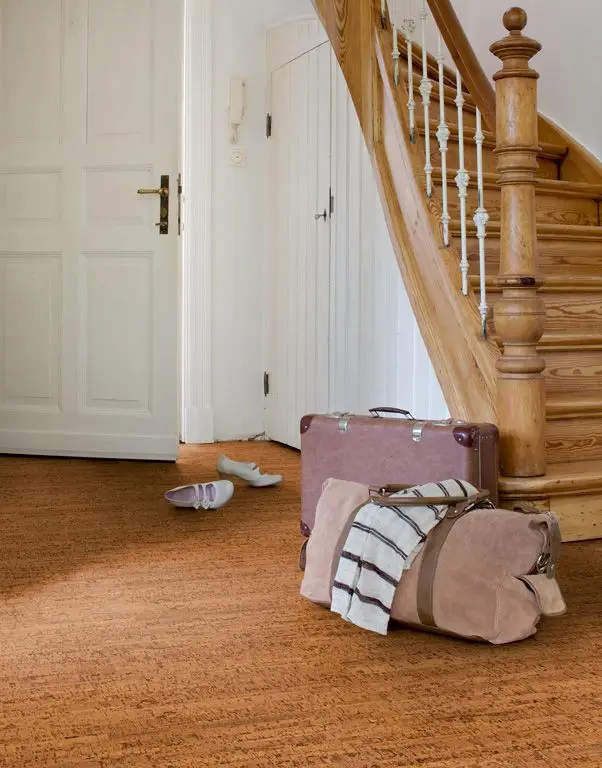
5) Bamboo Flooring
Bamboo flooring offers an excellent eco-friendly alternative to traditional hardwood. It’s made from a fast-growing grass that regenerates quickly, making it a sustainable choice for environmentally conscious homeowners.
Bamboo comes in various styles and colors, from natural blonde tones to darker stained options. You can choose between vertical, horizontal, or strand-woven varieties depending on your aesthetic preference and durability needs.
Installation is similar to hardwood, with both click-lock floating options and nail-down methods available. Most homeowners find bamboo relatively easy to install as a DIY project with basic tools and some patience.
Durability is a major selling point of bamboo, particularly strand-woven varieties which can be harder than oak. You’ll appreciate its resistance to moisture and humidity compared to traditional hardwoods, though it’s still best to avoid standing water.
Maintenance is straightforward—regular sweeping and occasional damp mopping will keep your bamboo floors looking pristine. Use furniture pads to prevent scratches and clean up spills promptly to extend the life of your flooring.
Bamboo typically costs between $3-$8 per square foot, making it an affordable yet stylish option for modern homes.
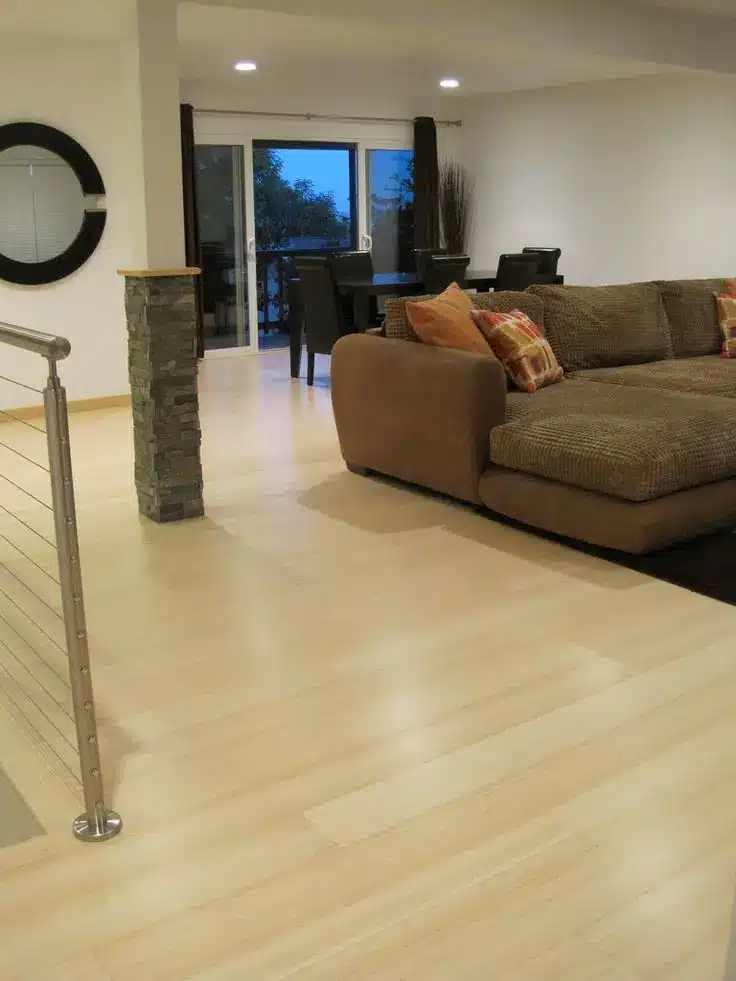

6) Peel-and-Stick Carpet Tiles
Peel-and-stick carpet tiles offer one of the simplest flooring solutions for DIY enthusiasts. These modular pieces come with adhesive backing that allows you to place them directly onto most clean, flat surfaces without needing additional glue or special tools.
You can install these tiles over existing flooring like hardwood, vinyl, or concrete, making them perfect for quick room transformations. Their modular nature means you can easily replace individual tiles if they become stained or damaged without redoing the entire floor.
These carpet tiles come in numerous colors, patterns, and textures to match your decor preferences. The installation process typically involves peeling off the backing and pressing the tile firmly into place, ensuring edges align properly with adjacent tiles.
For areas with unusual shapes, you can cut tiles using a utility knife and straightedge. Many homeowners appreciate that these tiles offer sound absorption and insulation properties while being softer underfoot than hard flooring options.
Maintenance is straightforward—regular vacuuming and occasional spot cleaning keep them looking fresh. When selecting peel-and-stick carpet tiles, look for quality products with strong adhesives for lasting results.

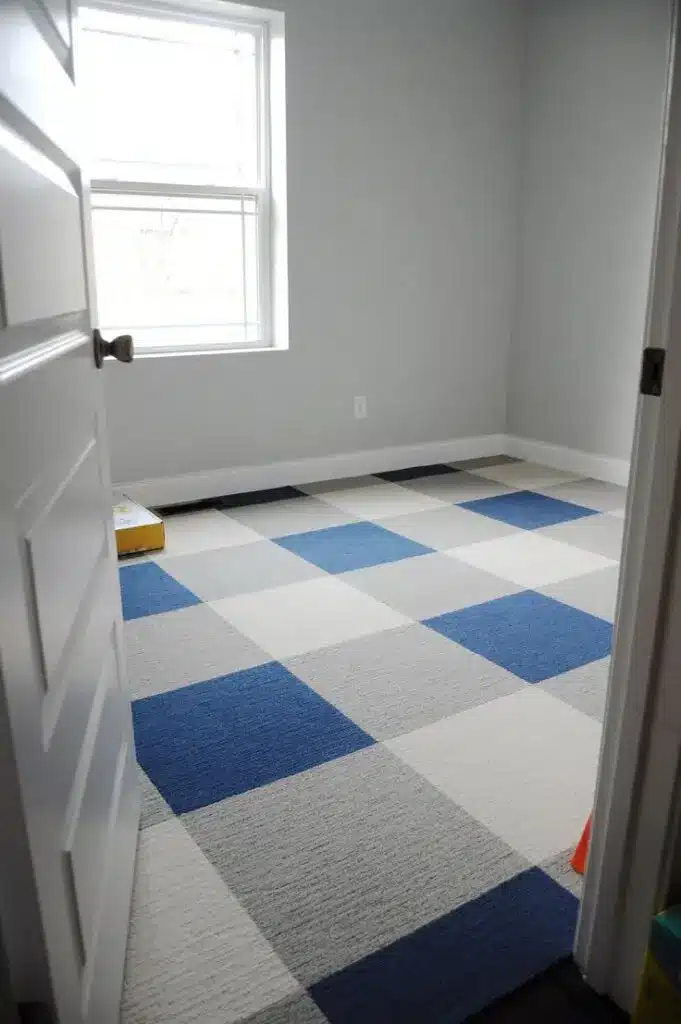
Benefits of Easy Flooring
Easy flooring solutions offer remarkable advantages for homeowners looking to upgrade their space without excessive time or financial investment. These options balance practicality with aesthetic appeal while meeting various household needs.
Cost-Effectiveness
Easy flooring options typically cost significantly less than traditional hardwood or natural stone. Luxury vinyl plank flooring averages $2-$7 per square foot, compared to hardwood’s $8-$15 range. This price difference can save you thousands on a whole-house installation.
Many DIY-friendly options eliminate professional installation fees, which typically add $3-$5 per square foot to project costs. This represents substantial savings on an average 1,000 square foot home renovation.
Budget-friendly materials like laminate and vinyl also reduce long-term expenses through improved durability and simple maintenance requirements. You won’t need specialized cleaning products or services.
Many manufacturers now offer cost-effective warranties, with some extending coverage up to 25 years. This provides peace of mind without premium pricing.
Ease of Installation
Most modern easy flooring systems feature click-lock or floating installation methods that don’t require adhesives or specialized tools. You’ll only need basic items like a measuring tape, utility knife, and rubber mallet.
Installation times are remarkably quick – an average room (10’x12′) can be completed in a single weekend. Many systems include pre-attached underlayment, eliminating that extra step.
Beginner-Friendly Features:
- No nailing or gluing required
- Minimal subfloor preparation needed
- Clear instructions and online tutorials available
- Forgiving of minor measurement errors
These systems work well over existing floors, often eliminating the labor-intensive removal of old materials. You can transform your space without creating excessive debris or dust.
Durability and Maintenance
Today’s easy flooring options utilize advanced wear layers and protective coatings that resist scratches, dents and stains. Many vinyl and laminate products feature 20+ mil wear layers, ensuring longevity even in high-traffic areas.
Water-resistant and waterproof options make cleaning simple – just sweep regularly and occasionally damp mop. No waxing, polishing or refinishing required.
Most modern easy flooring withstands pets, children, and everyday accidents. Engineered products specifically address common household challenges through thoughtful design.
You’ll appreciate the stability these floors maintain through seasonal temperature and humidity changes. Unlike solid hardwood, they resist warping, cupping and gapping.
Replacement is straightforward if a section becomes damaged – many click-lock systems allow you to remove and replace individual planks without disturbing the entire floor.
Materials for Easy Flooring
Selecting the right flooring material is crucial for a successful DIY project. The following options stand out for their affordability, ease of installation, and minimal maintenance requirements.
Laminate
Laminate flooring offers exceptional durability at an affordable price point. Made from composite wood pressed together at high temperatures, laminate features a photographic layer that can mimic hardwood, stone, or tile.
Most laminate flooring comes with a click-lock design that allows pieces to snap together without glue. You can install it directly over most existing floors, saving time and preparation work.
Laminate typically costs $1-$5 per square foot, making it budget-friendly for large areas. Modern versions offer water-resistant properties, though they aren’t fully waterproof like some alternatives.
The wear layer on quality laminate can withstand high traffic for 10-20 years before showing signs of wear. Clean-up requires only sweeping and occasional damp mopping.
Vinyl
Vinyl flooring has evolved significantly from its earlier versions. Today’s luxury vinyl tiles (LVT) and planks (LVP) provide realistic textures and visuals that convincingly mimic natural materials.
Available in sheets, tiles, or planks, vinyl gives you flexibility in installation methods. Peel-and-stick options require minimal tools, while floating floor systems click together seamlessly.
Vinyl offers superior water resistance, making it perfect for bathrooms, kitchens, and basements. Most products feature a protective wear layer that guards against scratches and stains.
Installation costs remain low at $2-$7 per square foot depending on quality. Many vinyl products include cushioned backing for comfort underfoot and sound absorption.
With proper care, vinyl flooring can last 10-25 years. Its resilient surface requires only regular sweeping and occasional mopping with mild cleaners.
- 50shares
- Facebook0
- Pinterest50
- Twitter0

